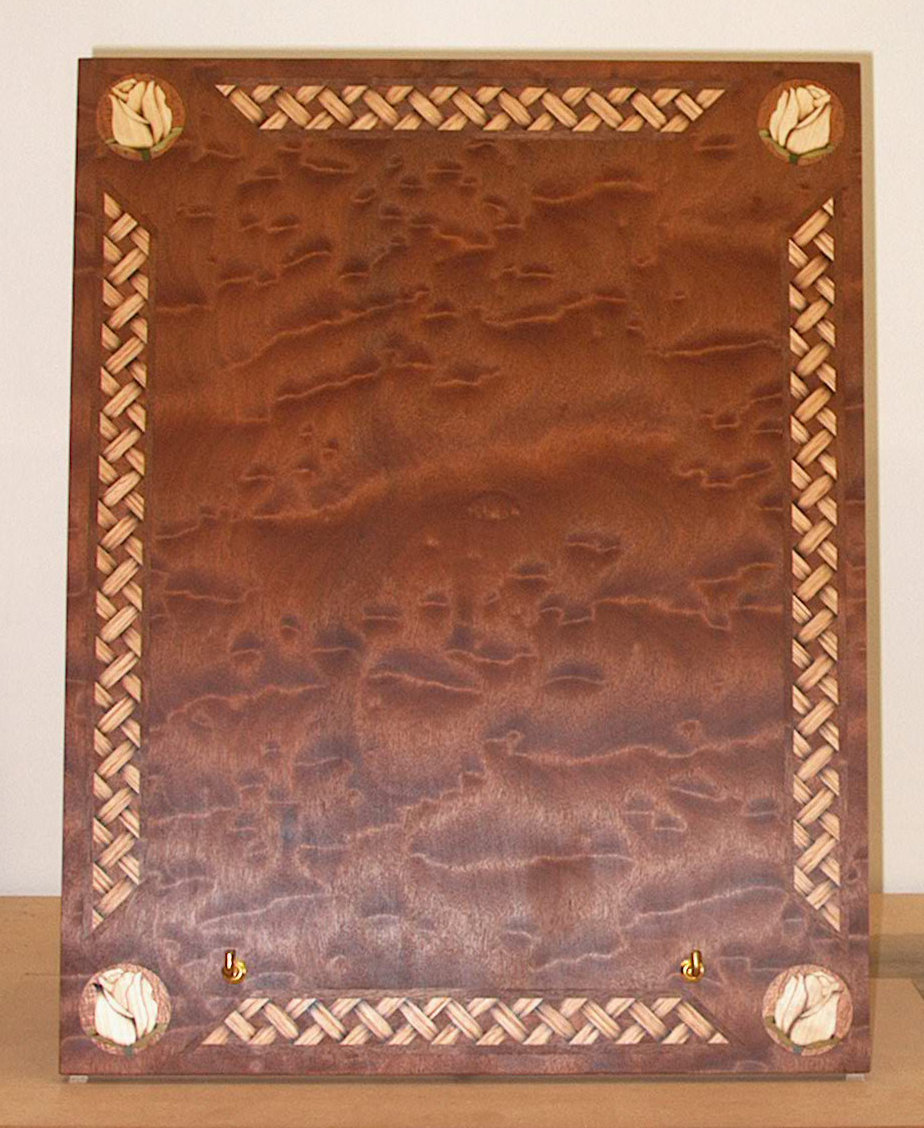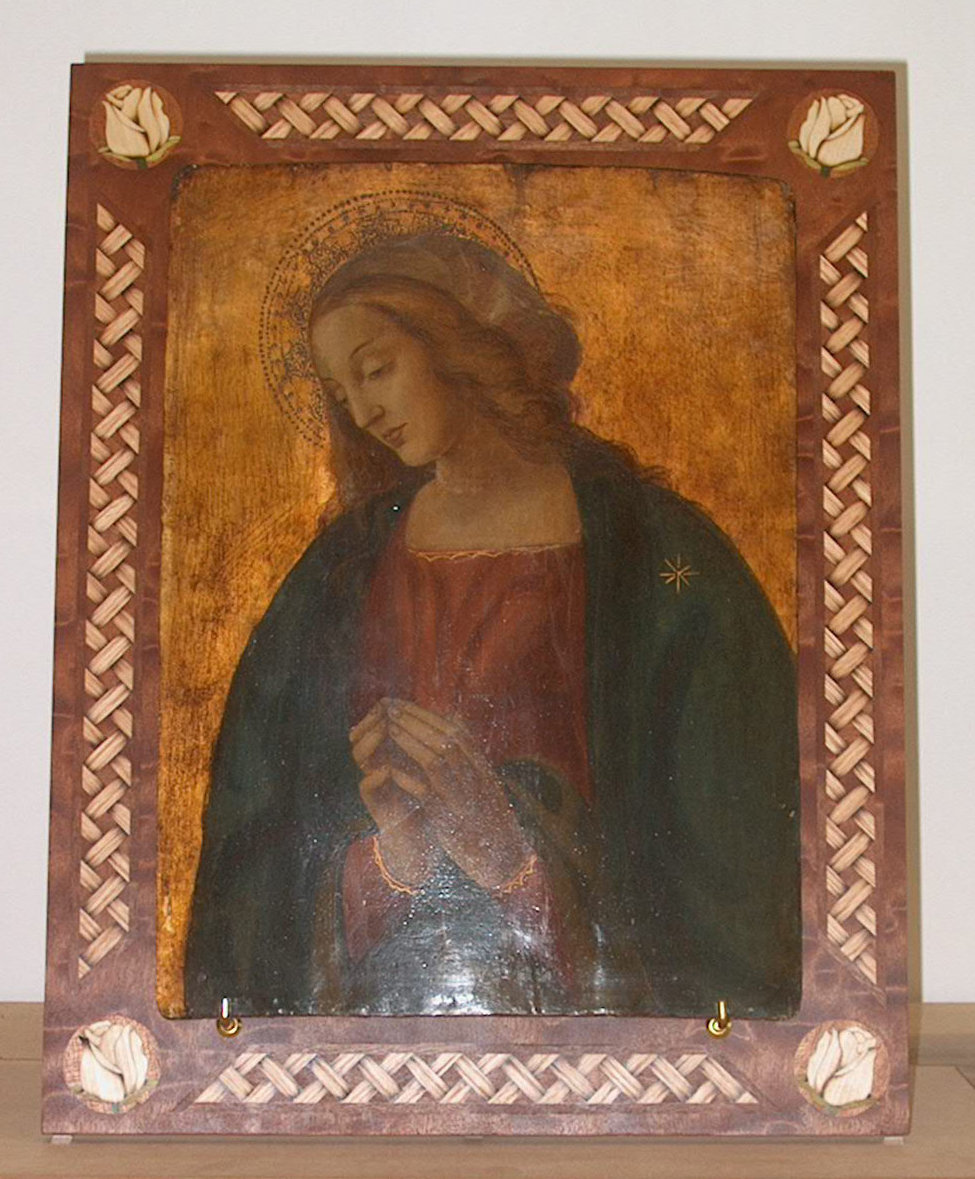Display Stand for A Painting
Several years ago a good friend and high school classmate had purchased at an antique store near her New Jersey home a painting of Mary Magdelene for her younger sister.

The painting was on a thin wood board and had bowed, so it could not be framed. Her sister was displaying the painting on an inexpensive metal stand for lack of a more suitable option.
During an extended visit to Cincinnati last spring, the three of us discussed the possibility of a decoratively veneered panel on which the painting could be displayed in a more honored manner.
After a couple hours comparing sample veneers and design elements, all three of us felt that one of the symbols of Mary, a rose, should be prominently included in the design. Mottled African makore seemed a good background veneer with its strong dark red coloration and varying hue.
A prototype panel was made combining the background mottled African makore with corner roses and several crosses using different veneer combinations as a second symbol to add needed detail to the panel.
The crosses just did not fit into the overall design so some other options were considered and dismissed.
After returning to New Jersey, Nancy happened to see a lattice pattern one day that she thought might improve the design. Additional samples were made, taped to the prototype panel, and shared via emailed pictures.

The above is the completed stand, finished with an oil-varnish blend. Attached to the back with a piano hinge is a shaped plywood piece so that the panel leans back slightly.
The "core" of the veneered panel is baltic birch plywood. The edges of the plywood were covered with strips of cherry. The "field" veneer on the front and back is mottled African makore. Two pair of roses were made with opposite tilts for design interest. Each of these roses has silver aspen petals, light green poplar sepals and a dark green poplar stem on a round sapelle background. There is also a fifth rose on the back side of the panel behind the star on Mary's left shoulder.
The lattice was discussed at length but I'm glad the sisters stood firm to my hesitancy. It added a lot of time to the project but greatly enhances the result.
The horizontal and vertical lattice patterns were drawn using a CAD program and each piece numbered in the drawing. As they were cut out each piece of veneer was numbered and organized on a large sheet of cardboard. Red oak was used for the lattice strips so that the linearity of the design would be made obvious by the oak grain pattern. Where the lattice strips would be woven under each other, the ends were dipped in hot sand to scorch them - the darkened ends gives a sense of depth to the lattice.

Hundreds of pieces of veneer were tracked and assembled into a wonderful "frame" for this treasured painting. A pair of brass "L hooks" support the painting. Pieces of clear vinyl tubing were slipped over the hooks to protect the painting from scratches. From start to finish the project took several months of intermittent work and sharing of design ideas and opinions. All in all, it was a very satisfying and rewarding project.
Return to Special Requests page